How Design Thinking Is Preparing Young People to Lead
Key Points
-
So many decisions at schools that directly impact students are made without their input.
-
Design thinking projects like the Student Voice Working Group give students a seat at that decision-making table.
-
Students at Piper High School in Kansas City, KS show what’s possible when given the support and space to create student-centered solutions to the challenges schools are facing.
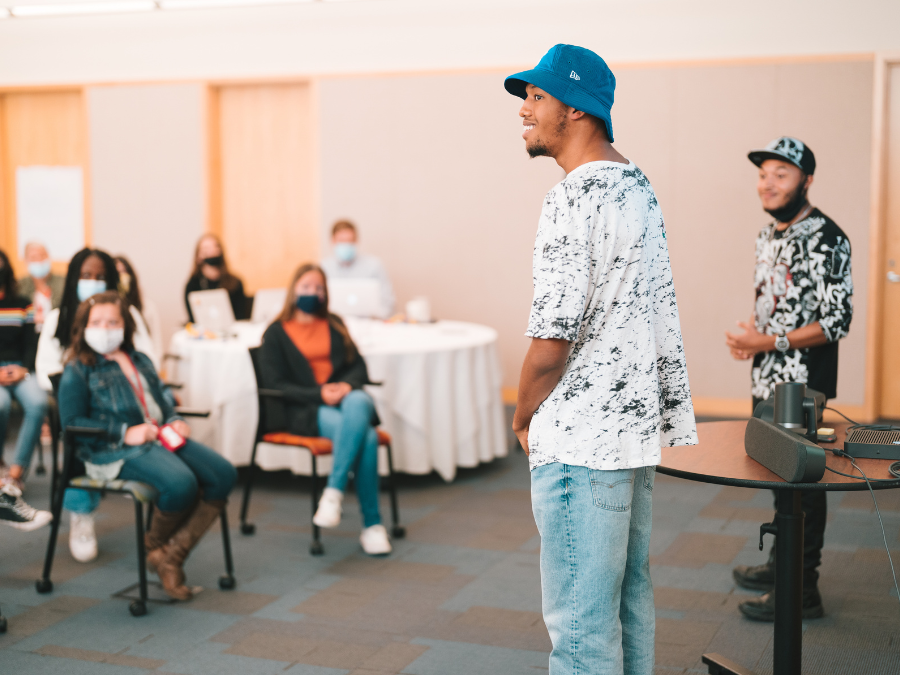
By: Vincent Alexis-Laona
As recent graduates prepare for life and work post-high school, they may find themselves reflecting on the messages they heard from graduation speakers. Regardless of where or when they walked across the stage, they likely heard a commencement address with some version of the following refrain – “you are the generation that is poised to tackle the problems of tomorrow.” That seemingly ever-growing list of crises include climate change, racial injustice, economic inequality, pandemics, and more. Most, if not all of us, can get behind this idea that young people must be prepared to take on these causes. But if we’re expecting young people to walk across that stage and into a world filled with problems to be solved by innovative solutions, should we be waiting until they leave school to get started?
These are not issues with a clear playbook for young people to follow in search of solutions. If there was a roadmap for addressing and solving these problems, we’d be well on our way down that path. Instead, young people will need to blaze their own path, organize new coalitions, and discover solutions that they and the adults in their lives cannot even perceive at this moment.
Every Student Needs Opportunities to Lead Now
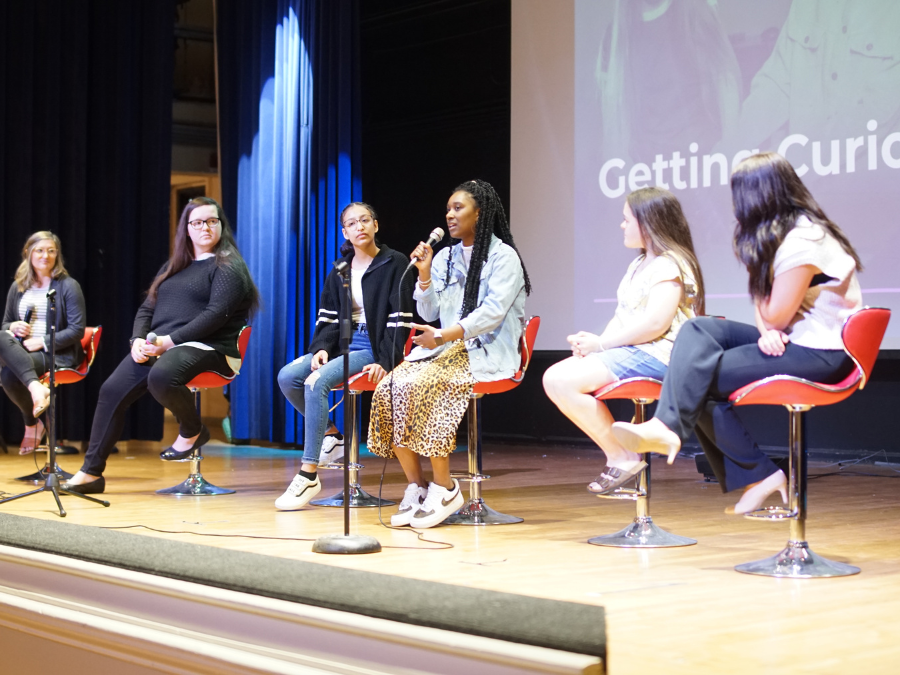
It’s imperative we stop and ask, “are our schools preparing students to address these issues?” It’s painfully obvious that the answer for many schools and classrooms is, “no.” The typical model for schooling (one that hasn’t changed much in decades) continues to focus on imparting knowledge to pupils and asking them to retain as much of the knowledge as possible. This might be an effective method for getting students to ace an upcoming exam. And it may have been fruitful when our schools were preparing graduates to enter industries that required a lot of executing and less thinking, but it’s not going to equip the next generation of leaders with the skills needed to address the big issues looming on the horizon. Problems of tomorrow won’t require this generation to sit, listen, and regurgitate. So what good is it doing us to have them practice those “skills” now?
Schools are not capable of giving students all the knowledge needed to solve problems like climate change and economic inequality. And even if they could teach them every fact and formula, these future leaders will need a lot more than a base of knowledge to address what’s heading our way. Our classrooms will instead need to be places that foster the transversal and adaptive skills that young people can use to tackle any problem.
If we are to rely on Generation Z and those who follow to be the people that lead us through challenges, they must be equipped with leadership skills. Evidence shows that there are certain traits leaders have in common. These traits include drive, leadership motivation, honesty and integrity, self-confidence, cognitive ability, and content knowledge. Many of those traits are underdeveloped or ignored in a typical classroom as schooling typically reserves “leadership” opportunities for special activities and student groups. Even many Advanced Placement classrooms focus on only a few, if any, of these skills.
Research is telling us that students benefit from opportunities to take on leadership experiences, but what happens to students who aren’t able to take advantage of those opportunities, or to whom they are simply not offered? Historically, these traits have been developed when students take on leadership roles in an extracurricular capacity – leading Student Council or captaining the football team, for example. This an especially important question for students whose life circumstances may make participation in extracurricular activities a challenge. Many students head to a job after school or have other at-home responsibilities. If these leadership experiences offer an opportunity for students to develop these essential skills, it’s important that the experiences aren’t limited to after school hours. Instead of thinking of them as “extra,” they should be part of the day-to-day culture of our classrooms.
And the benefit of a shift like this is not only for students. Teachers feel valued and empowered when they are taking on the role of developing our future generation. A democratic classroom allows them to help students in that way. When classrooms are more focused on compliance, the negative impact isn’t only felt by students. Teachers see their role flattened and without nuance. Occupying the role of a child care provider as opposed to educator.
The truth is, few schools and curriculums are currently designed to give young people these opportunities during the typical school day. In order to best prepare students for their future, schools need to find a way to offer learning experiences to their students that give them authentic opportunities to lead.
Giving Young People a Seat at the Table
It’s not just that we’re not preparing our students for a future of solving problems, we’re missing opportunities to leverage their passion and expertise to tackle issues in our schools now. Take part in a quick thought exercise – you are the principal of a school in need of a solution to a persistent problem facing your staff and students. You convene a meeting with the school’s leaders to start planning. As you imagine this scenario, who is in the room? More often than not, that room is filled with adults. They are bright, experienced, well-meaning adults, but the group with arguably the most at stake in these decisions are students, and they are often left out of the highest leverage discussions. Students are missing an opportunity to have a say in those decisions, but they are also missing opportunities to build the skills necessary to lead once they leave school.
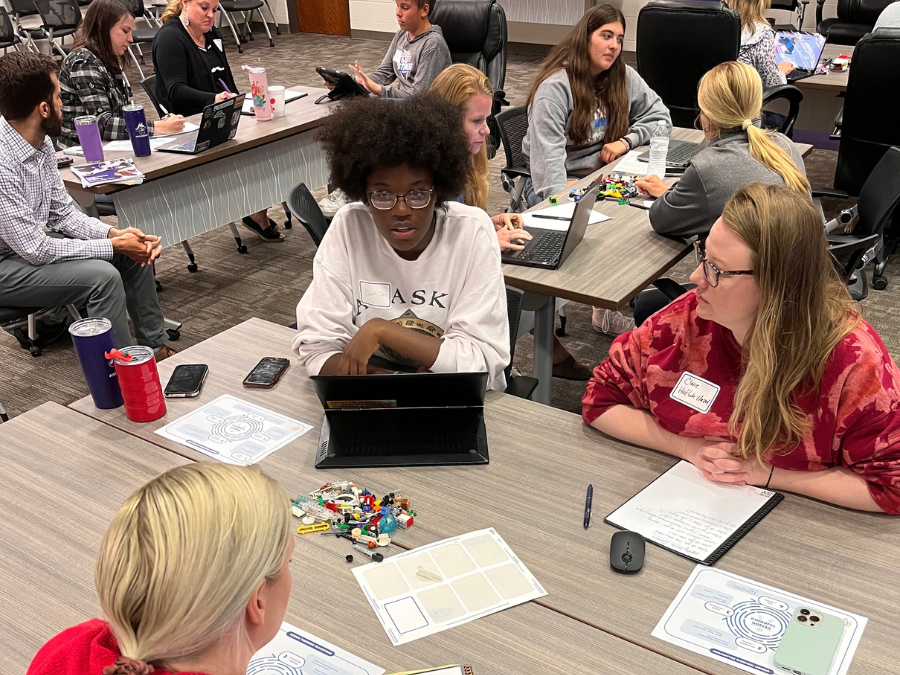
It’s not a surprise that giving students more of an opportunity to play a role in planning what their learning looks like would lead to them feeling more empowered while also helping them develop those essential transversal skills. Whether looking at the research or simply observing students who are given these chances to flourish, it’s clear that opportunities to lead are essential to ensuring that schooling is truly student-centered.
So how can we give students more opportunities to build these skills and prepare for what’s ahead? Classrooms and schools that have students using design thinking are giving students a chance to have a say in their learning, break out of the typical industrial model of learning, and start to make an immediate impact on their community. Startland Education works with schools and teachers to leverage design thinking to create frequent opportunities for students to lead in their classrooms. Students are tasked with choosing an issue or problem that feels relevant to their lives. They make decisions about how to research the problem and work with their peers to ideate solutions. Classrooms that frequently use design thinking have teachers that are acting more as facilitator and project manager than the “sage on the stage” of classic lecture models. The more practice young people get with leading projects, collaborating with their peers, and solving problems in their community, the more comfortable they get. For schools that use design thinking, leadership and problem solving are not reserved for small groups of students at infrequent intervals. It becomes a regular part of the school environment
In Kansas City, we’ve been able to see young people and their educators shine while working through the design process. For the 2021-2022 school year, Startland Education partnered with the Ewing Marion Kauffman Foundation to launch the second cohort of Student Voice: a program that groups students and teachers together in teams to create solutions informed by real-world learning for their districts. The impetus for this program was in line with much of the thinking outlined earlier in this piece. For too long, the issues facing our schools and students have been addressed only by the adults in those buildings and not by the people who are impacted the most – students. This year-long program leveled the playing field and put young people in a position to leverage their voice and passion to implement change in their schools or districts while also developing crucial leadership and problem solving skills.
On a monthly basis, this group of students and teachers from a diverse set of schools across greater Kansas City convened to learn about the design thinking framework and plan for implementing it in their own setting. While each team was tasked with leveraging student voice to improve their school, the empathy work they completed back in their districts took them all on different paths.
Case Study: Student Voice at Piper High School
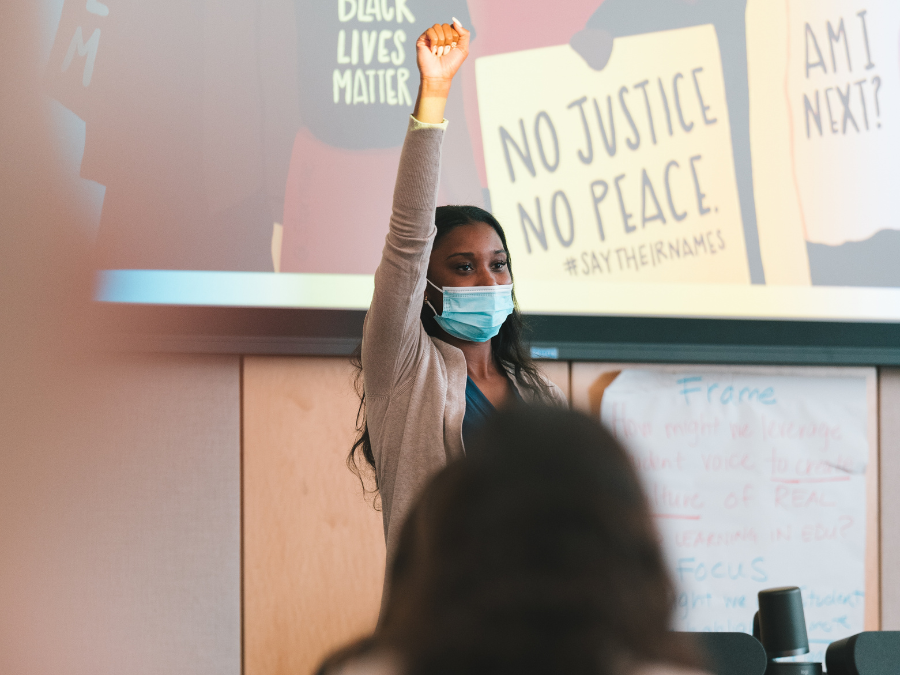
Piper High School in Kansas City, KS has a growing BIPOC student population. While we know that a diverse student body can be an asset for a school, the shifting demographics can also mean that a school isn’t quite ready to support all their students in the way they need. Piper is not alone as a district facing these challenges, but where many schools are working to improve conditions for students from historically marginalized communities by engaging staff and faculty, students at Piper were the driving force taking steps to support not only the Black student body at Piper, but at some surrounding schools as well.
Students Langston and Jillian came to the Student Voice Working group with an idea already in mind. As executive board members of the Black Leaders of America group at their high school they had an idea for a half-day conference focusing on intersectionality, mental health, entrepreneurship, and scholarship essay writing. They called it Accelerate: Empowering Students of Color for Success.
Jillian, Langston, and their teacher/mentor Ms. Amber Buck used the design thinking framework covered as part of the working group to dig into what the students at schools like theirs need. Throughout their time in the working group, they reviewed student survey data while iterating and updating their ideas for programming to continue impact even more students. The result was not only Langston and Jillian getting more experience with transversal leadership skills; They also worked to create a community of empowerment and inclusion to improve the school experience for students across the city.
As has been mentioned earlier, many of the issues facing our schools have the biggest impact on students. But in many cases, the people who are impacted the most by decisions being made at schools are not in the room making those decisions. The Accelerate conference was student-created, student-organized, and student-facilitated. The experiences of these Piper students and their peers in the Student Voice Working Group show that when adults provide space and limited facilitation, and step out of the way, young people are capable of tackling the issues they’re facing. These experiences give them a chance to flex their leadership muscles, learn what does and doesn’t work, and create school environments that better fit their wants and needs. Read more about this project and other Student Voice Working Group projects at our event blog.
The Student Voice cohort and many other classes utilizing design thinking are not only preparing students for the problems they may face in the future, they’re asking for their input and help tackling the issues we are facing right now. With these projects, there are no simulations. Instead, the stakes are real and young people can see their impact immediately. There isn’t an implied message being sent that the “grown ups are in charge and will handle it.” Instead, the very people who will be impacted most by a decision are being asked to not only weigh-in but to lead the way. There may be more and more headlines that point towards crises and a bleak future, but a society that looks to its young adults and equips them with necessary skills will be heading toward a brighter future. Sometimes all it takes is setting young people up and then getting out of their way.
Youth leadership is just one benefit of using design thinking in schools. To read more about this and how design thinking addresses education’s most pressing issues, download and read Startland’s complete white paper here.
Vincent Alexis-Laona is the Teacher Development & School Impact Manager of Startland Education, a program of Startland, a 501(c)3 nonprofit. Startland Education’s mission is to bring human-centered design thinking to classrooms in order to create communities that value our youth and inspire them as future change leaders and entrepreneurs. To learn how Startland Education can equip and empower educators in design thinking at your school, visit startlandedu.org.
This post is part of our New Pathways campaign sponsored by ASA, Stand Together and the Walton Family Foundation.



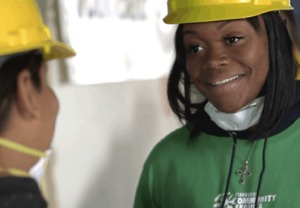
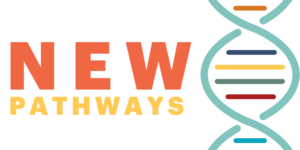
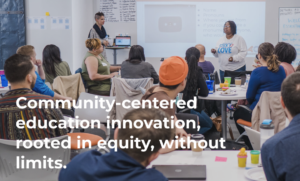

Martin Rayala, PhD
This is an excellent description of a new way to educate students. When our current system of education was set up over 100 years ago the “clients” were the states and school districts, the “customers” were heads of families, and the students were “products.” This article presents a new vision of students as co-creators/collaborators with some agency and autonomy in their own education, schooling and learning. Formal schooling actually makes up only about 1 tenth of education and learning over a lifetime. Helping students become lifelong learners may be a more effective strategy than the simple transmission of knowledge and skills.